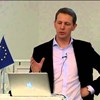myrberg

Waiting for Integration Gunnar Myrberg
Gunnar Myrberg berättar om sin forskningsrapport "Var ska de nyanlända bo? Perspektiv från Malmö och Århus på svensk och dansk flyktingplaceringspolitik" på Framtidsfokus Waiting for integration, anor
Political Integration through Associational Affiliation? Immigrants and Native Swedes in Greater Stockholm
2011. 37:99–115. Journal of Ethnic and Migration Studies. Abstract Theories of participation have been developed and tested almost exclusively on majority populations. While the relative underrepresentat
Who is an Immigrant?
Pp. 47-74 in Bo Bengtsson, Per Strömblad and Ann-Helén Bay, (Eds.), Diversity, Inclusion and Citizenship in Scandinavia. Newcastle upon Tyne: Cambridge Scholars Publishing. Abstract This chapter suggests
Where are newcomers going to live? Perspectives from Malmö and Århus on Swedish and Danish refugee dispersal policies
Institute for Futures Studies, IFFS Report 2012/3, 82 p. During the last decade, Denmark and Sweden have become increasingly dissimilar in terms of migration policy. While Sweden has remained relativel
Urban Inequality and Political Recruitment
Urban Studies, DOI: 10.1177/0042098012458549 This paper provides evidence of segregation-generated differences in political recruitment. Focusing on social-geographical differentiation in the urban lan
Patterns of Participation: Engagement among Ethnic Minorities and the Native Population in Oslo and Stockholm
Pp. 172-197 in Laura Morales and Marco Giugni, (Eds.), Social Capital, Political Participation and Migration in Europe: Making Multicultural Democracy Work. Palgrave Macmillan. Abstract There is a widespr
Urban Inequality and Political Recruitment Networks
Taking social-geographical differentiation in the urban landscape into account, this paper provides evidence of segregation-generated differences in political recruitment networks. It is found that ac
Optimal Opportunities for Ethnic Organisation and Political Integration? Comparing Stockholm with Other European Cities
Laura Morales and Marco Giugni (Eds.) Social Capital, Political Participation and Migration in Europe: Making Multicultural Democracy Work Pp. 115-139. Palgrave Macmillan. Abstract The overall question in
Applying spatial regression to evaluate risk factors for microbiological contamination of urban groundwater sources in Juba, South Sudan
Hydrogeology Journal 25(4) pp. 1077-1091, doi: 10.1007/s10040-016-1504-x Abstract This study developed methodology for statistically assessing groundwater contamination mechanisms. It focused on microbiahumanitarian aid organisation Médecins Sans Frontières in 2010. The factors included hydrogeological settings, land use and socio-economic characteristics. The results showed that the residuals of a conventional probit regression model had a significant positive spatial autocorrelation (Moran’s I =3.05, I-stat = 9.28); therefore, a spatial model was developed that had better goodness-of-fit to the observations. The mostsignificant factor in this model (p-value 0.005) was the distance from a water source to the nearest Tukul area, an area with informal settlements that lack sanitation services. It is thus recommended that future remediation and monitoring efforts in the city be concentrated in such low-income regions. The spatial model differed from the conventional approach: in contrast with the latter case, lowland topography was not significant at the 5% level, as the p-value was 0.074 in the spatial model and 0.040 in the traditional model. This study showed that statistical risk-factor assessments of groundwater contamination need to consider spatial interactions when the water sources are located close to each other. Future studies might further investigate the cut-off distance that reflects spatial autocorrelation. Particularly, these results advise research on urban groundwater quality.








